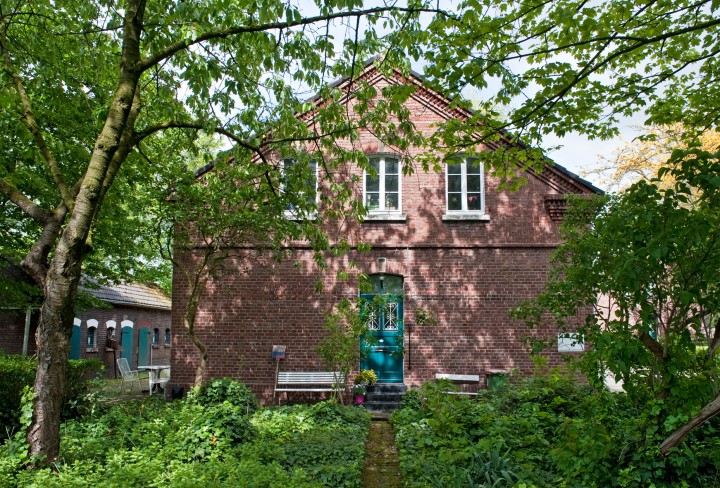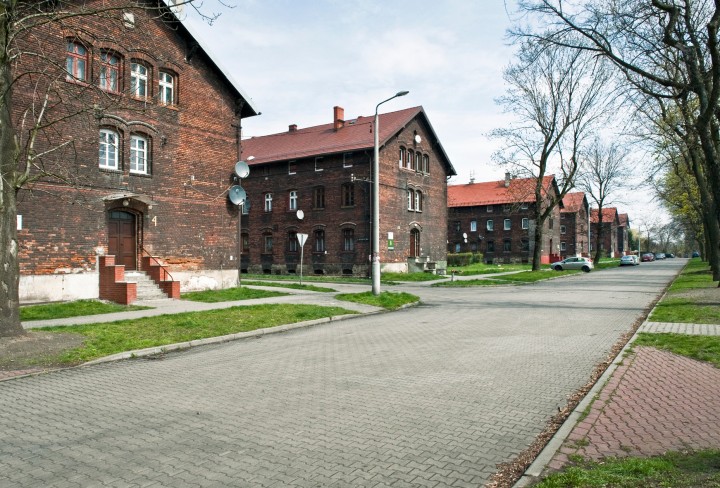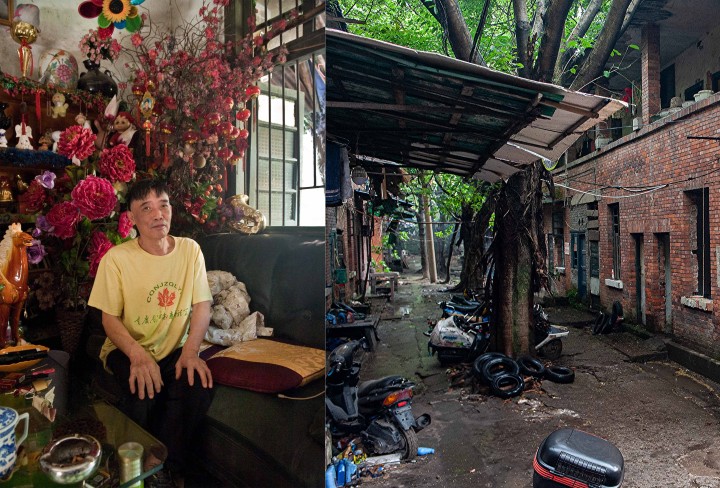

The Silk Route, a legendary network of trading and caravan routes, linked Central Asia with Europe for hundreds of years. Goods, people, ideas and innovations travelled along it. And even today the concept of a trading route connecting the Occident and the Orient is still alive, for example in the “New Silk Route” project, one starting point considered to be Xian in Central China and the other Duisburg on the Rhine.
Bernard Langerock a photographer from Düsseldorf undertook the journey to the three workers’ housing estates along this “New Silk Route”, in Chongqing in China, Zabrze in Poland and the Eisenheim housing estate in Oberhausen. Over thousands of kilometres he sought out the common elements and differences in daily routine and everyday life of those who once in the past and still today produce merchandise and consumer goods along the Silk Route.

Workers’ housing estates are characterised by a particular type of communal living and the architecture shapes entire urban districts. They could be said to be characteristic for the Ruhr region and where they are numerous. The Eisenheim housing estate is the oldest and it experienced an eventful history between construction, destruction, threatened demolition and distinction as a historic monument.

The traces of the industrial era are gradually fading in the “Borsigwerk” housing estate in the Biskupice district of Zabrze too as the working environment changes and the path towards the digital age opens up. The housing estate was built for the miners from Upper Silesia between 1863 and 1871 and named after the industrialist August Borsig. Although here too satellite dishes and other utensils of modern life bear witness to the present, the large brick buildings in the estate emanate the feeling of heavy labour and the difficult life at the height of the industrial age..

On the other hand, the future has arrived in the Tongyuanju workers’ housing estate. The old houses have been to a large extent demolished. As was once the case in Eisenheim the Tongyuanju residents protested against the demolition of the estate in past years. Their protest was in vain. Instead the huge Chongqing metropolis snatched up the real estate to replace the old brick houses with modern high-rise buildings.
Photographs: © Bernard Langerock
Bernard Langerock captures the transformation of life and daily routine at all three housing estates in his artistic documentary photographs and depicts what separates and what links these places which are so far apart. In addition to the artistic documentary pictures, Bernard Langerock directs his sights on details and depicts places to linger, evidence of the passion for football, disappearing everyday phenomena such as the “candy beaters” in China. His voyage is framed by “moving landscape” photographs taken during train journeys in the respective regions.
An exhibition catalogue has been published by Bergischen Verlag.
The project “Workers‘ Housing Estates along the Silk Route” has been developed in cooperation with the Kulturreferat Oberschlesien and the Oberschlesisches Landesmuseum (State Museum on Upper Silesia). It is being supported by the Konfuzius-Institut Metropole Ruhr and the Mining Museum in Zabzre
Exhibition period:
02.07.2021 – 29.05.2022
Opening times:
Tuesday - Friday 10-17.00 hours, Saturday and Sunday 11-18 hours
Entrance fee:
5.50 €, reduced 4.50€ (Permanent and Temporary Exhibition)
Guided tours in foreign languages (English & Dutch):
60,00 €
The exhibition is accessible.
Information on accessibility in the St. Antony-Hütte
Visitor Information:
kulturinfo rheinland
Tel: 02234 9921555
(Mon-Fri 8-18.00 hours; Sat, Sun and Public Holidays 10-15.00 hours)
Fax: 02234 9921300
Email: info@kulturinfo-rheinland.de
Exhibition site:
LVR-Industriemuseum
St. Antony-Hütte
Antoniestr. 32-34
46119 Oberhausen